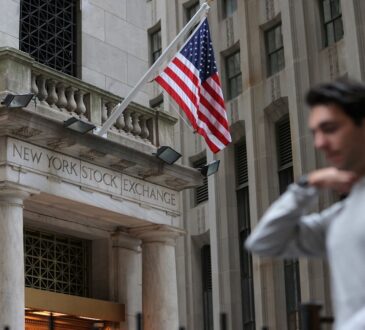
With the West dogged by talk of recession and China flagging, “India has emerged as a much-needed global good news story”, says Craig Mellow in Barron’s. The local BSE Sensex stock index rose by 18.5% in 2023 and has more than doubled since the pandemic-era lows of 2020. Pro-business prime minister Narendra Modi is likely to win a third term this spring, so expect “the good times… to keep rolling in 2024”.
The “sizzling rally” recently saw the National Stock Exchange of India, one of the country’s two exchanges, surpass Hong Kong as the world’s seventh-largest, says Diksha Madhok for CNN. By total value, Indian stocks already rank fourth globally, behind the US, China, and Japan.
The stock surge has been accompanied by a listings boom. Indian markets hosted 150 listings in the first nine months of 2023, compared with just 42 in Hong Kong.
Sign up to Money Morning
Don’t miss the latest investment and personal finances news, market analysis, plus money-saving tips with our free twice-daily newsletter
Don’t miss the latest investment and personal finances news, market analysis, plus money-saving tips with our free twice-daily newsletter
There have been false dawns in India before, says the Financial Times. But several key trends are now blowing in favour of the world’s fifth-biggest economy. Geopolitical shifts have seen Western capital sour on China, with India emerging as the natural alternative. Government policy is pro-growth and focused on building much-needed infrastructure. The result? India has been the “world’s fastest-growing major economy” for two years running and looks set to continue in that role.
The problem, as Mellow notes, is that “Indian shares are as expensive” as their US counterparts, with the market trading on an average price/earnings (p/e) ratio of 25, a steep premium to the average global emerging-market level of 12. There are also persistent concerns about uneven corporate governance standards in corners of the market.
“Lofty valuations” in India have “in the past… been followed by periods of stagnation,” says the Financial Times. The local “Nifty” market trades at “a 64% premium” to other emerging markets on a forward p/e basis, says Megha Mandavia in The Wall Street Journal. Investors should also be aware that banks dominate the local bourse, with a 30% share of the MSCI India index; technology accounts for a comparably paltry 13%. Yet while Indian shares can be a “wild ride”, the country’s “investment case looks better than it has in a long time”. The current rally could have further to run: while Indian equities drew in a net $12bn of foreign investment in 2023 as of 6 December, non-residents still own just 17.5% of Indian shares – “significantly below the February 2021 peak of 20.6%”.
India’s economy overtook the UK’s in 2022. Come 2028, India looks on course to “surpass Germany and Japan” as well to become the world’s third-biggest economy, says Henry Ince of Hargreaves Lansdown. “With nearly 70% of its… population in the working-age bracket,” the country is demographically vibrant. A growing middle class will be a “significant theme for investors”: India currently accounts for just 5% of global middle-class consumption, and by 2050 that could hit 40%. While there may be bumps along the way, there is a solid growth case here for long-term investors.
This article was first published in MoneyWeek’s magazine. Enjoy exclusive early access to news, opinion and analysis from our team of financial experts with a MoneyWeek subscription.

